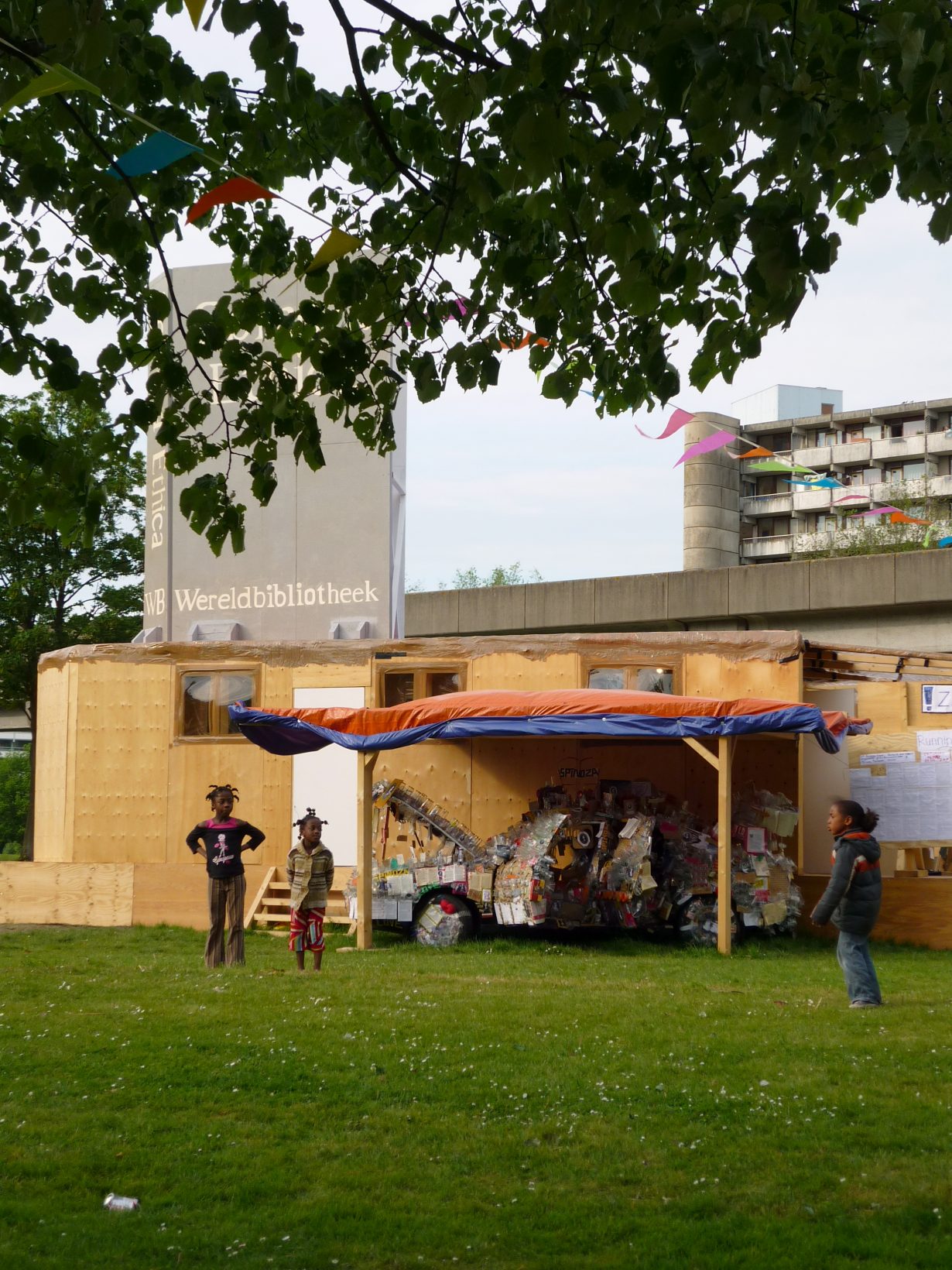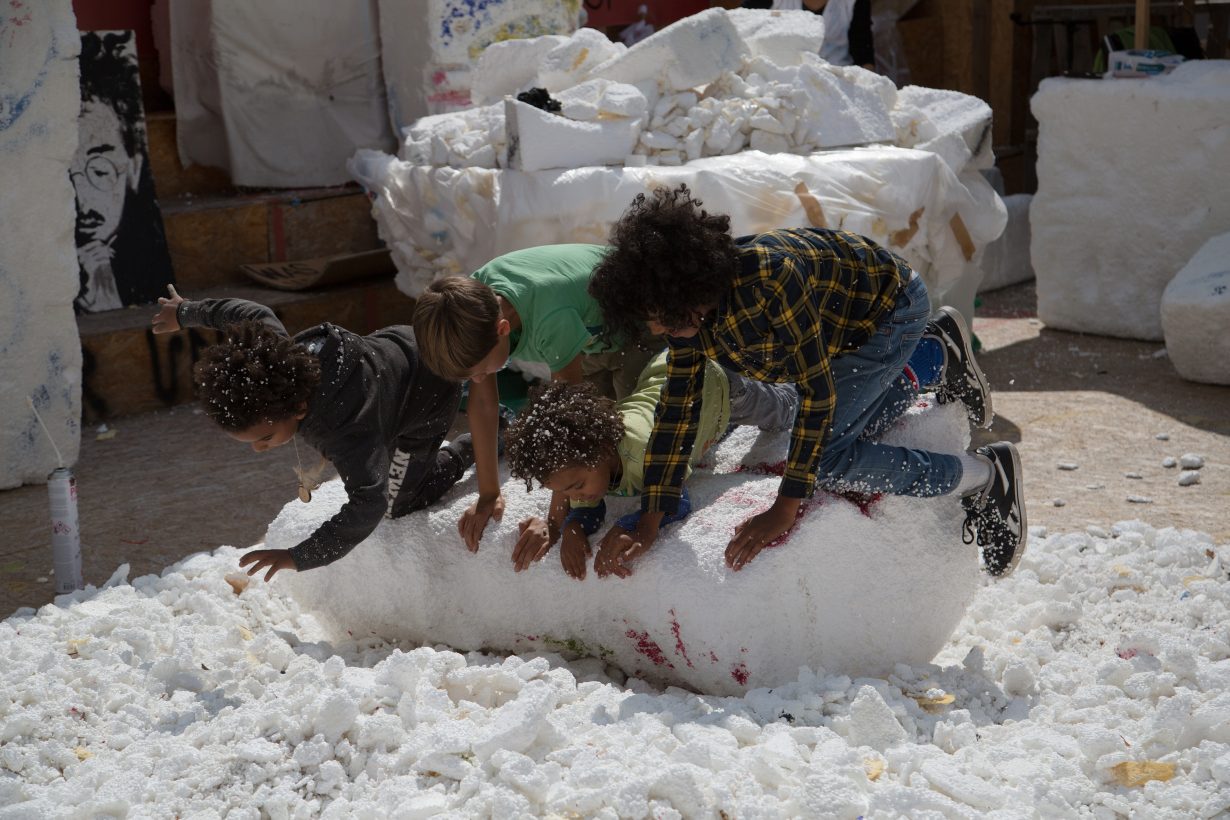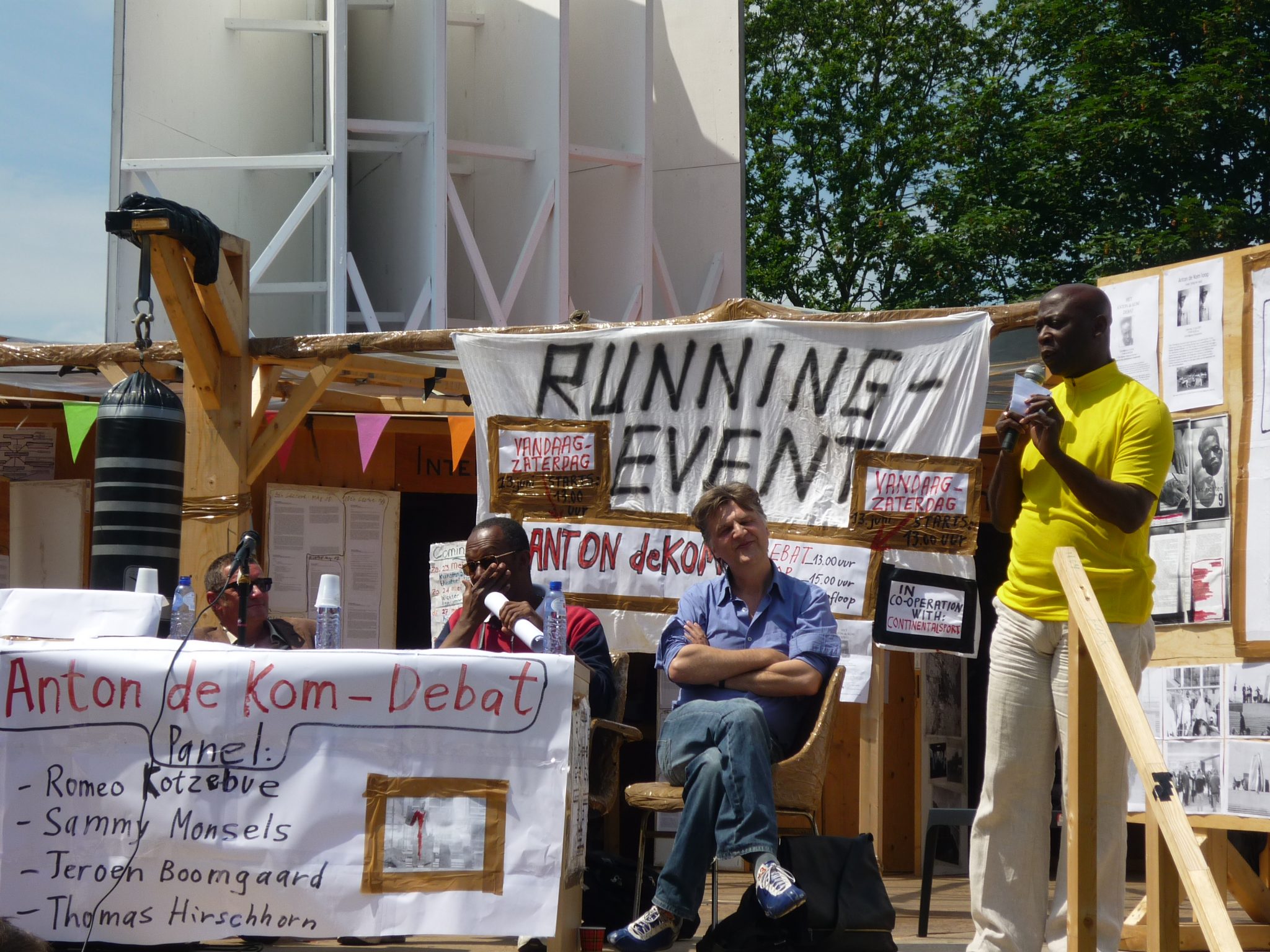The artist’s works – designed to be a habitable space, as well as a lab, a storage facility and a stage – are forever becoming; a document of an endless and moving thought
I always failed when it came to keeping a diary. Miserably. The very idea that I might one day (want to) reread myself still triggers nausea and deep embarrassment. It’s like hearing your own recorded voice. Paradoxically, though, I love reading other people’s diaries and intruding on the thoughts and voices of strangers. Better still if they deal with something such as a specific event, or even a specific object like a painting or a sculpture; it’s less painful and requires less empathy. During my years at university, I was besotted with the Italian art critic and feminist Carla Lonzi’s diary Taci, anzi parla (Shut Up. Or Rather, Speak; 1978), in which she describes her emerging feminist consciousness; whereas in later years I loved The Sight of Death: An Experiment in Art Writing (2006), the diary T. J. Clark kept on the subject of two Poussin paintings, recording everyday variations in terms of his perception of the canvas itself. And right now I’m really enjoying Thomas Hirschhorn: The Bijlmer Spinoza-Festival, The Ambassador’s Diary (2023), by the art-historian Vittoria Martini, which seems to share with the other diaries I’ve mentioned a tale of the evolution of the writer’s awareness and the continuous recording of the variations of the object being studied, whether it be the process of self-discovery as a woman and self-definition as a feminist, or the perception of a Poussin painting.
Invited in 2009 by Swiss artist Thomas Hirschhorn to his Bijlmer Spinoza-Festival project in the Bijlmer district in southeast Amsterdam, Martini was to attend in the role of ‘ambassador of art history’, whatever that means. She spent the next two months (the duration of the artwork) documenting and trying to give definition to a work that was configured as a festival but affirmed (by the artist) as a single sculpture.

Bento (Baruch in Hebrew, but better known by his Latin penname, Benedictus) Spinoza was born in Amsterdam in 1632 and went on to become one of the most radical and important European thinkers of the Enlightenment era. His work covered the spheres of religion, metaphysics, epistemology, politics and science; it was banned in the Dutch Republic one year after his death, in 1677.
The Bijlmer Spinoza-Festival is one of a series of monumental works produced by Hirschhorn (others include Deleuze Monument, 2000, Gramsci Monument, 2013, and Robert Walser-Sculpture, 2019). Each is similarly shaped to be a habitable space, as well as a lab, a storage facility and a stage. As a sculpture, it is forever becoming; a document of an endless and moving thought. Or at least it creates the conditions for these possible uses. The labyrinthine building was made of wood and partly covered by plastic sheeting to protect it from bad weather – built by Hirschhorn and a construction team consisting of Bijlmer residents without permanent jobs. The structure, topped by a giant wooden book, a sculpture of Spinoza’s key work, Ethics (1677), was divided into several rooms, hosting the Spinoza Library, the Ambassador’s office, the Bijlmer Documentation Center (curated by a resident of the neighbourhood) and The Spinoza Exhibition, which contained copies of Spinoza’s books, a docufilm on his life, statues representing the philosopher and other tools through which to discover Spinoza’s thought. The rooms were connected and opened onto a platform, raised from the ground by about half a metre, which was home to a bar, a large workbench, a sofa and chairs wrapped in plastic tape, and a desk for daily conferences. The platform was also used as the stage where Spinoza Theater. An Ontological Comedy in Twenty-six Scenes, a production based on the thought of Spinoza, took place each day in front of an audience, whether the performers were ready or not. We can define The Bijlmer Spinoza-Festival as a platform, and also a town square designed to develop a community, through the effort to engage a nonexclusive public in daily activities – such as talks, the philosopher’s lessons, theatre and the publication of a daily newspaper – sometimes with substantial participation, at other times having no public present at all, but always building moments of grace.

From this perspective, Spinoza’s concept of vital energy, referenced in Spinoza Theater, sounds like the kind of energy that shone out on the impromptu community of people that every day gathered at The Bijlmer Spinoza-Festival, activated by the sculpture and by the essential presence of Hirschhorn himself, in the role of political agitator, as a catalyser of experiences and as a builder of a gathering place. In Martini’s telling, then, being there, and the need to have an experience that endured over time and at the mercy of contingency, became increasingly important. Because each day was different from the previous one, and each day something new was built, it followed that each moment was an important one, seeing as something had happened.
In this context, and dominated by an archivist’s impulse, Martini’s diary began as a straightforward recording of what happened and the progressive accumulation of related content – such as lecture notes on the blackboards, the archived copies of the daily newspapers produced as a part of the project and notes about incoming guests and scheduled events, all handwritten by Hirschhorn. Thus, part of the art historian’s work was focused on the formulation of a statement about what it means to be an ‘ambassador of art history’, especially within this context, and how to write art history accordingly. In a way Hirschhorn himself was pushing at the limits of what could be defined as art history, asking Martini to narrate with a historical methodology something from which it was impossible to have a distance in terms of time and objectivity, just as much as he sought to challenge the definition of ‘sculpture’ with something deeply precarious.

The art ambassador’s efforts, then, seem to be focused on writing in an objective way despite being deeply involved in the evolution of the subject matter, while keeping in mind that to write about something that is forever in the process of becoming is also to write words that may resist the evolution of the artwork itself. Her research, from this perspective, cannot find relief via the balm of any definitions given by an encyclopaedia, because any definitions of ‘ambassador’ and ‘art history’ seem not to be appropriate to narrating what happened in this space, nor the stress of being deeply involved in what happened there and forced to embody part of the project. As a consequence, the book is suffused with a strange anxious feeling, perceptible in the reading, related to the effort required to hold onto something that is continuously changing, which in turn has the effect of making the experience of reading Martini’s account really close to the experience of being there. The book also addresses the point of the sculpture’s evolution and the level of elaboration in the thinking, which in the final part of the book are commented on by other art historians, including Lisa Lee, Mignon Nixon and Claire Bishop, in the shape of an email exchange. Lee is the more supportive, especially in sharing Martini’s belief in the need to formulate a statement of what it means to be an art historian, and the responsibility entailed in the writing of art history. Decidedly less generous is Nixon, whose email offers only encouragement. While the exchange with Bishop is dialectical and stimulating, inasmuch as she shares her thoughts on the performative nature of the project, she is more focused on the fact of its existence than on the production of content – an idea that generates a quite contrasting reply from Martini.

The end of all this, for Martini’s part, is the kind of writing that serves only to testify to the ambassador’s being there, a phase during which she documents everything through written notes, photographs and video; followed by a phase related to raising awareness of the impossibility of making history ‘here and now’, and consequently the choice to create an archive; and lastly, entering into a dialogue with other art historians.
The choice to write a diary, and then publish it in a form that is as close as possible to the first draft, is her only possible form of production, since chronicling and drafting different statements have been the most comfortable style for expressing her contribution to a continuously evolving work such as The Bijlmer Spinoza–Festival. It’s a form of writing that renounces theory for experience, critical distance for the deeply involved; that imposes itself as action and reaction in a productive and tangible way, rather than as theoretical and invisible thinking. What is at stake seems to be a history of art written in the first person, and the diary as a methodology for writing art history makes the experience of reading the book very similar to the process Martini is describing. This process required of Martini an effort that seems proportional to the time she needed to recover from her prolonged presence as part of the project, 24 hours a day for two months.
I’m sure that returning to a diary after ten years – the time Martini needed before going back to her own words with a more distanced look and the possibility of analysing the experience – will have caused that same sense of embarrassment at reading a distant version of yourself and your thoughts that I described at the beginning of this article, but I’m equally sure that a diary can be a good way, a precious one, to make us more aware of what Hirschhorn’s art might mean, as a space thought out in a way to facilitate a thinking in flux, a thinking that is never ending, whatever that means.
